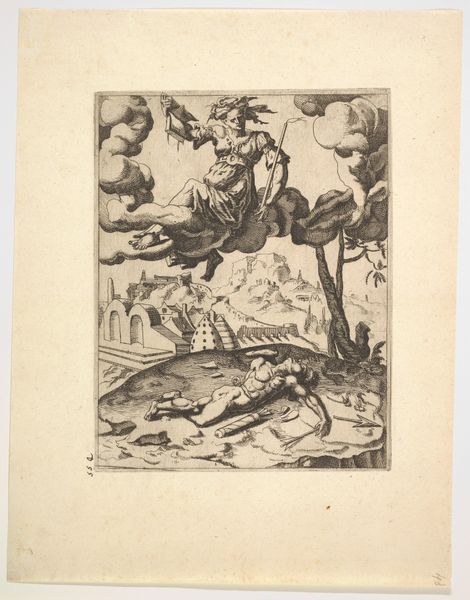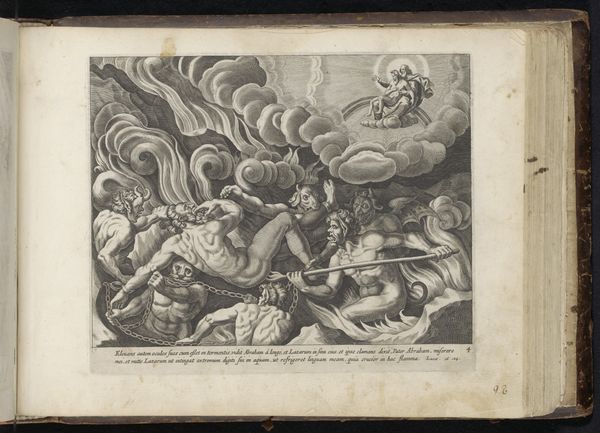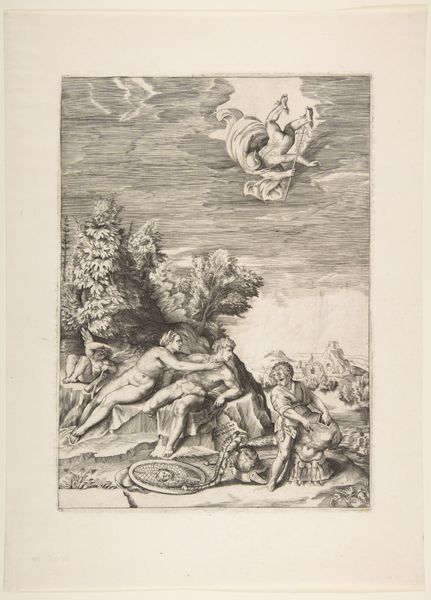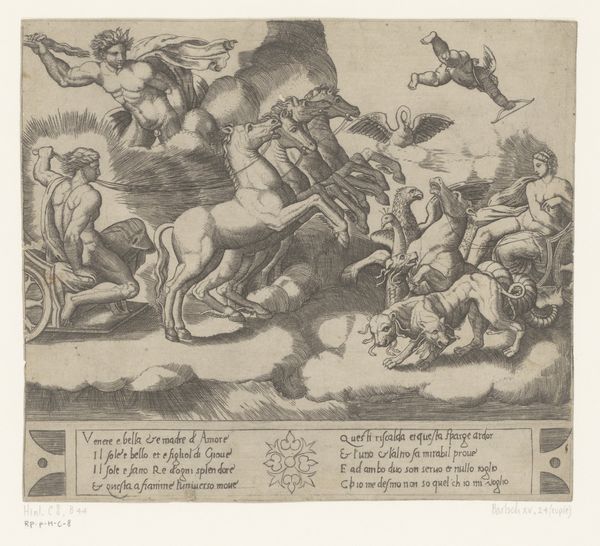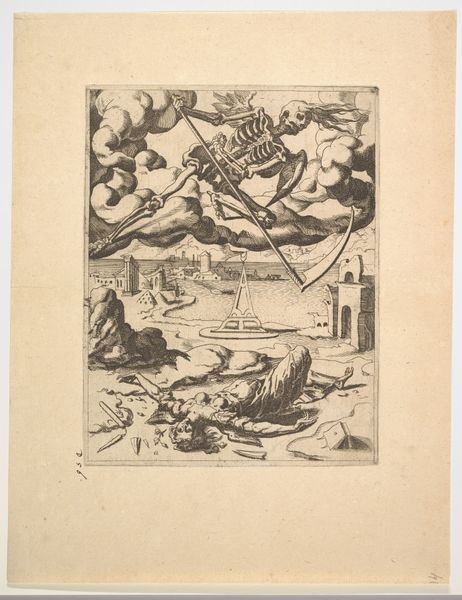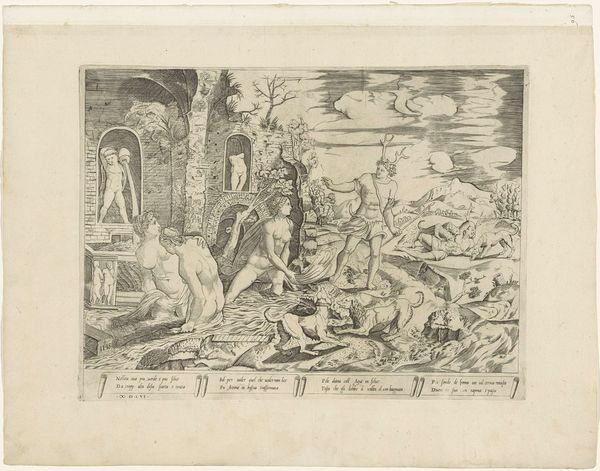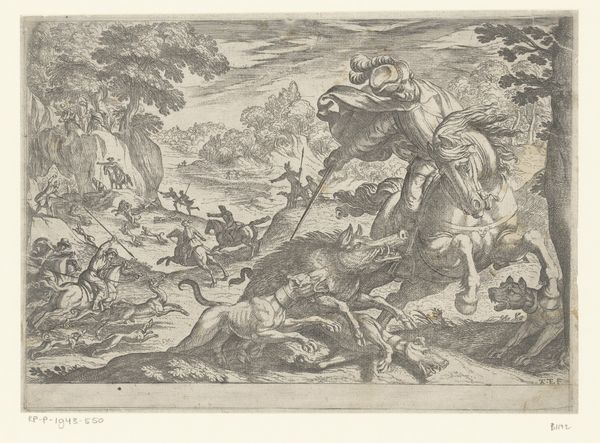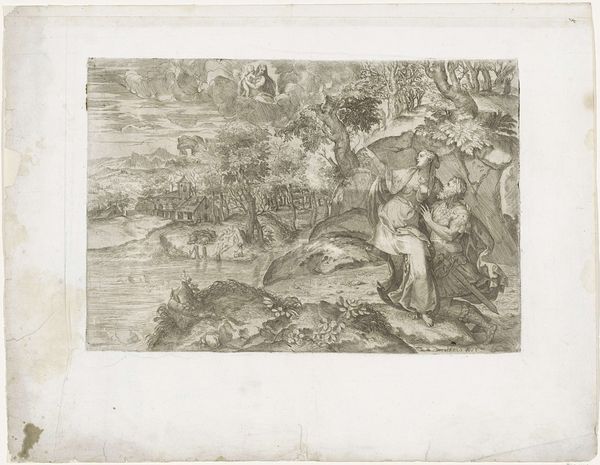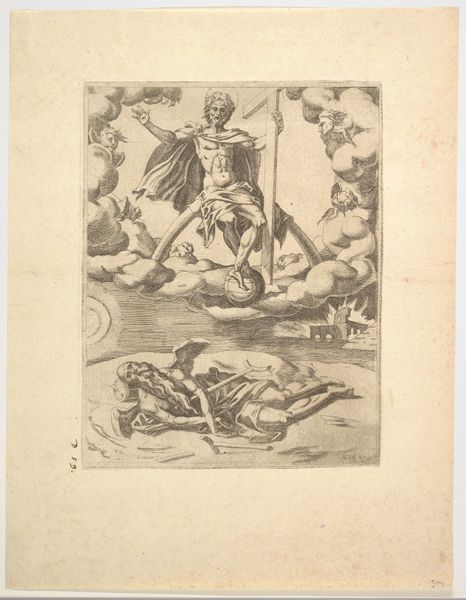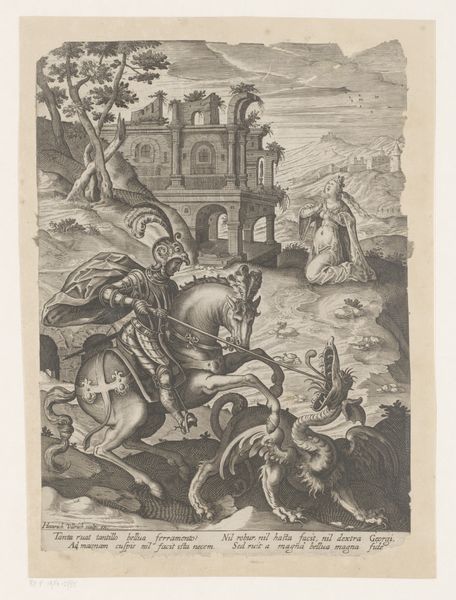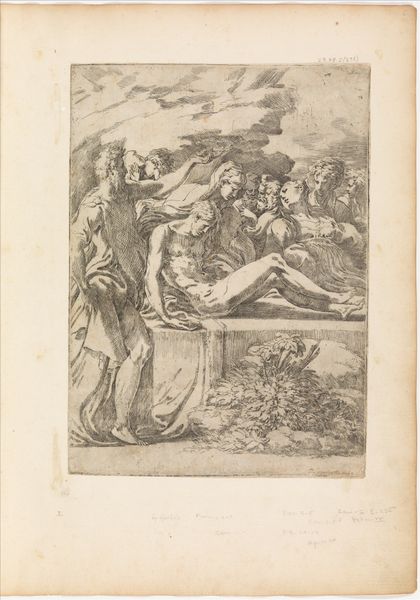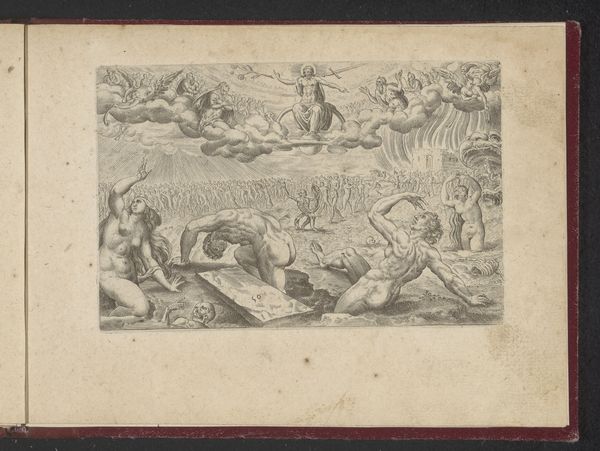
The Triumph of Love from The Triumphs of Petrarch 1543 - 1553
0:00
0:00
drawing, print, engraving
#
drawing
#
allegory
# print
#
mannerism
#
figuration
#
cupid
#
line
#
history-painting
#
engraving
Dimensions: Plate: 9 x 6 7/8 in. (22.8 x 17.5 cm) Sheet: 13 7/16 x 10 3/8 in. (34.2 x 26.4 cm)
Copyright: Public Domain
Editor: Here we have "The Triumph of Love from The Triumphs of Petrarch," an engraving by Dirck Volckertsz Coornhert, dating from sometime between 1543 and 1553. The allegorical scene depicts Cupid reigning over worldly objects. I'm immediately struck by the contrast between the detailed foreground and the soft background; what's your take? Curator: This piece is fascinating from a materialist perspective. Consider the labor involved in creating an engraving like this in the 16th century. Each line painstakingly etched, reflecting the engraver’s skill and time invested. Think about the social context too: prints like these democratized art, making images and ideas accessible to a broader audience beyond the elite who could afford original paintings. Notice the repetition and manipulation of lines to create depth and texture. It's a manufactured image, reflecting societal values and anxieties around Love, with a capital "L." What message was the artist and publisher trying to convey, and to whom? Editor: So, it's less about the symbolism of Cupid and more about the printmaking process itself? I mean, sure the objects below create an allegory of love, and cupid riding above indicates some sort of triumphal... status? Curator: Not entirely. The symbolism is crucial, but it gains added weight when considered within the framework of its production. The material - the copper plate, the ink, the paper - and the means of production influence its meaning. Were these prints meant to reinforce the prevailing social order? To titillate? Consider who owned these prints and what purposes they served. The print represents "Love" using industrializing reproductive practices, bringing up the interesting concept of consuming it. Editor: That's a very different way of seeing it! I hadn't considered the socioeconomic aspect. It’s not just about the subject matter but how the image came to be and who it was intended for. I guess seeing it through the lens of its creation gives it more depth than just understanding it in symbolic form. Curator: Precisely. Understanding art means looking at its production and consumption!
Comments
No comments
Be the first to comment and join the conversation on the ultimate creative platform.
